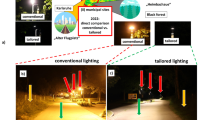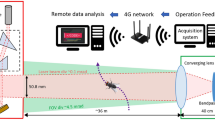Abstract
TSETSE have been successfully marked, so that they can be located at night, with paints which fluoresce in ultra-violet light1 (see Jewell, preceding communication), but the method had the disadvantage that the equipment required to produce ultra-violet light in the field was cumbersome. It was considered that the reflecting paints, nowadays widely used for road signs, might be equally effective for marking the insects and require only light in the ordinary visual range, such as can be provided by an electric torch.
This is a preview of subscription content, access via your institution
Access options
Subscribe to this journal
Receive 51 print issues and online access
$199.00 per year
only $3.90 per issue
Buy this article
- Purchase on Springer Link
- Instant access to full article PDF
Prices may be subject to local taxes which are calculated during checkout
Similar content being viewed by others
References
Jewell, G. R., Nature, 178, 750 (1956).
Jackson, C. H. N., Bull. Ent. Res., 21, 491 (1930).
Author information
Authors and Affiliations
Rights and permissions
About this article
Cite this article
RENNISON, B., LUMSDEN, W. & WEBB, C. Use of Reflecting Paints for locating Tsetse Fly at Night. Nature 181, 1354–1355 (1958). https://doi.org/10.1038/1811354b0
Issue Date:
DOI: https://doi.org/10.1038/1811354b0
This article is cited by
Comments
By submitting a comment you agree to abide by our Terms and Community Guidelines. If you find something abusive or that does not comply with our terms or guidelines please flag it as inappropriate.



